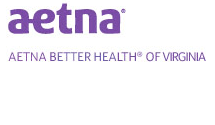Diabetes and Low Blood Sugar
A kind of sugar called glucose (say: GLOO-kose) is the body's main source of energy. Having too little glucose in the blood is dangerous, especially for kids with diabetes. Doctors call low blood sugar hypoglycemia (say: hi-po-gly-SEE-me-uh). Some low blood sugar levels are easy to handle, but a very low blood sugar level might need medical help right away.
Glucose comes from the foods you eat. It gets inside your cells with help from a hormone called insulin. Kids with diabetes have trouble making or using insulin (say: IN-suh-lin). Getting the right balance of food, physical activity, and medicines can help glucose levels stay in a healthy range. Your doctor will give you a care plan to guide you and tell you your healthy blood sugar range.
How Can Blood Sugars Get Too Low?
Many things can cause blood sugars to drop. Kids with diabetes can have low blood sugar if they:
- skip a meal or snack
- don’t eat enough at a meal or snack
- exercise longer or harder than usual without eating something extra
- get too much insulin
- don’t time the insulin doses properly with meals, snacks, and exercise
- take a long bath or shower right after an insulin shot
What Are the Signs of Low Blood Sugar Levels?
A kid with mild low blood sugar might:
- feel shaky or have a fast heartbeat
- have pale, sweaty skin
- have a headache or blurry vision
- feel extremely hungry or lightheaded
- feel very tired or moody
- have nightmares
A kid with severe low blood sugar might:
- be confused
- have a seizure
- not respond or be hard to wake up
How Are Low Blood Sugar Levels Treated?
A dose of sugar is the treatment for low blood sugar levels. The goal is to get the blood sugars back into a healthy range as quickly as possible.
Here’s what to do when a person has symptoms of low blood sugar:
- Check blood sugar levels if you can do it quickly.
- Eat, drink, or take something high in sugar that can get into the blood quickly. Good choices are regular soda, orange juice, cake frosting, glucose tablets, or glucose gel (a tube of sugary gel).
- Wait about 10 minutes while the sugar starts to work.
- Recheck blood sugar levels to see if they are normal.
- Repeat these steps until the blood sugar is back in a healthy range.
Tell your doctor if low blood sugars happen often.
When Is Low Blood Sugar an Emergency?
It’s an emergency when a low blood sugar makes a kid so weak or sleepy that they can’t eat or drink any sugar.
In an emergency, a kid needs a dose of glucagon right away. Glucagon (say: GLOO-kuh-gon) is a hormone that raises blood sugar levels very quickly. It’s also made as a medicine. Your diabetes care team will tell you if you need to keep glucagon in your to-go kit and what your parents and teachers need to know about it.
What Can Help Prevent Low Blood Sugars?
Even if you follow your care plan, you can still have low blood sugar levels sometimes.
Here are tips to help you prevent low blood sugars:
- Try to eat all your meals and snacks on time. And don't skip any.
- If you exercise longer or harder than usual, have an extra snack.
- Take the right amount of insulin at the right time.
- Don't take a hot bath or shower right after an insulin shot.
- Stick to your diabetes care plan.
What Else Should I Know?
It’s a good idea to wear a medical ID bracelet or necklace that says you have diabetes. If you don’t feel well, your ID will give important information to the adult helping you.
